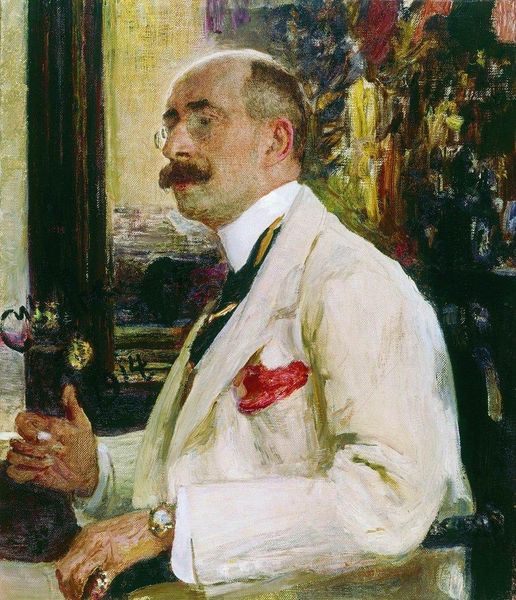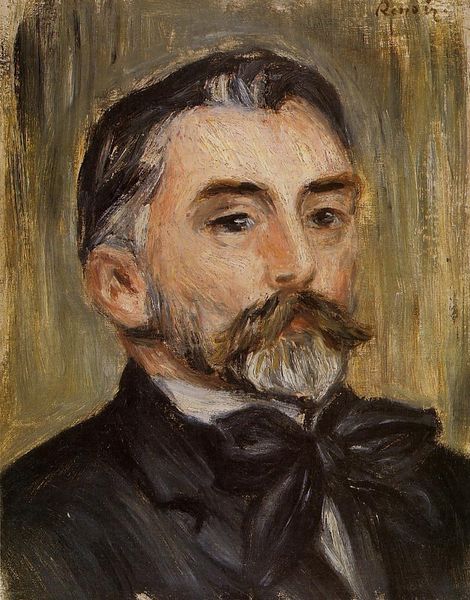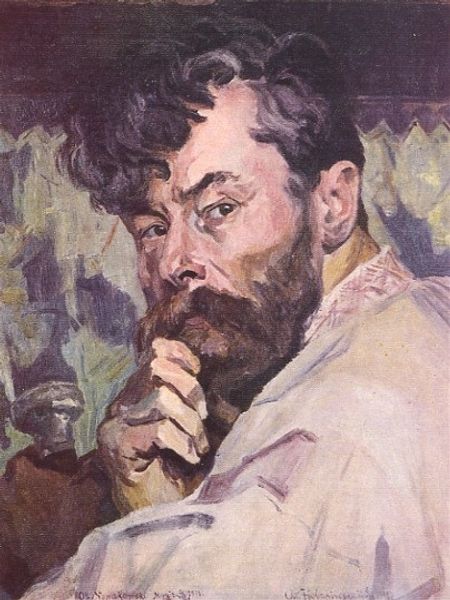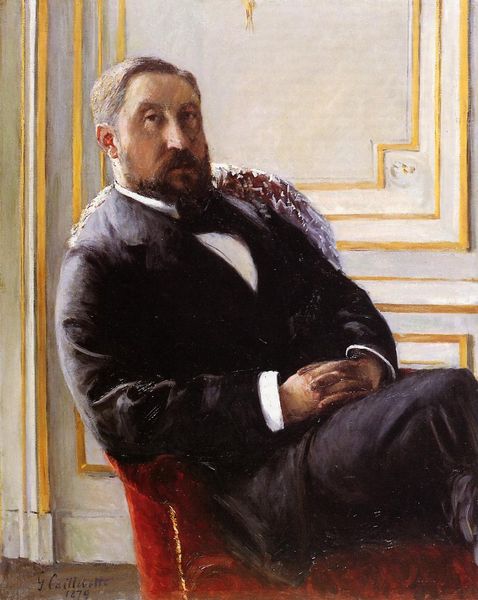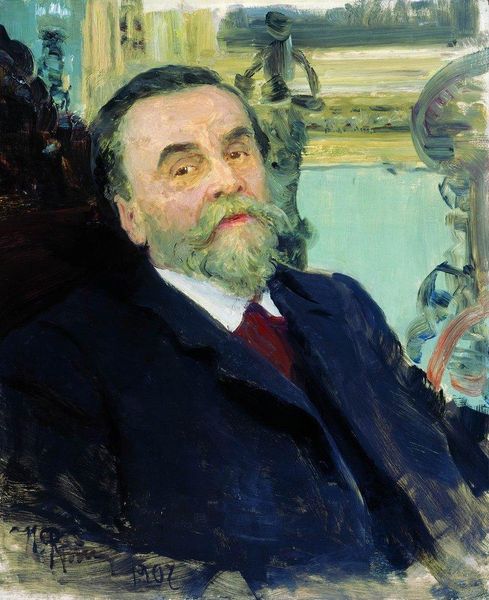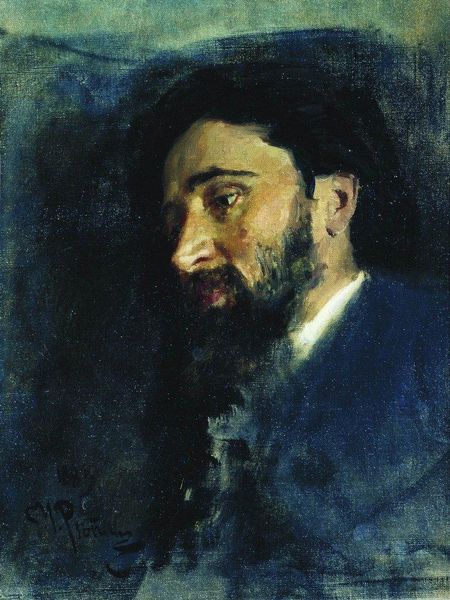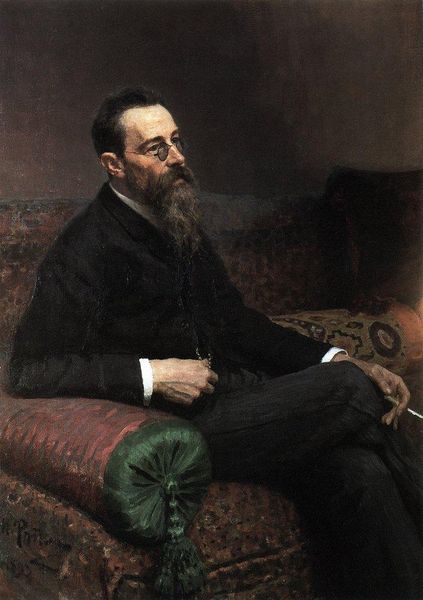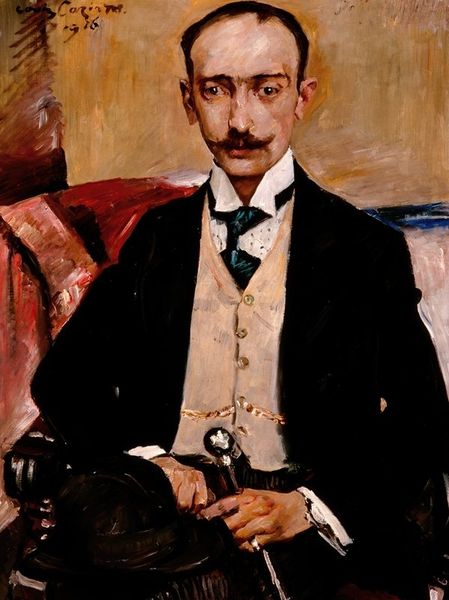
Copyright: Public domain
Editor: Here we have Renoir’s "Paul Berard," an oil painting from 1880. I’m immediately drawn to the sitter's somewhat contemplative gaze, the dark colours, and the textures of the background. What social dynamics might this portrait speak to? Curator: This portrait, viewed through an intersectional lens, speaks volumes about 19th-century bourgeois masculinity and power. Notice the pose: reclining, yet controlled. The cigar is a key signifier here. It signals wealth, leisure, and a certain… performative masculinity. Who gets to occupy this kind of space and project this kind of image? Editor: So, you're suggesting the portrait is a visual declaration of status and belonging? Curator: Exactly! And more than that. Think about Impressionism’s project more broadly: capturing fleeting moments. What moment is being captured here? Is it one of genuine introspection, or is it carefully staged? We need to consider how portraits like this helped construct and maintain a social hierarchy that privileged men of a certain class. Who was included and, more importantly, who was excluded? Editor: It's fascinating to consider how the composition, the very act of painting, becomes a political statement. How the ‘male gaze’ functions within the composition. Curator: Precisely. By acknowledging that artworks don’t exist in a vacuum and examining the political environment in which they were created and consumed, we gain a much richer understanding. Do you find the man to be empowered in his pose? Or does the composition evoke a sense of restraint and discomfort? Editor: Now I wonder if his controlled composure may belie anxieties about class and societal shifts during that period, his gaze seeming not sure of his standing in society. Curator: It seems so! Thinking about power and representation will change how I see other portraits now.
Comments
No comments
Be the first to comment and join the conversation on the ultimate creative platform.

